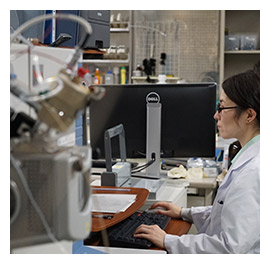

Mass Balance Studies: What You Need and Why You Need It
- In Vivo & Radiolabeling
- November 15, 2019
- Jolanta Golec, Madison Esely-Kohlman
In vivo mass balance studies are an important element of nonclinical drug development, to inform first in-human (FIH) studies and to understand the pharmacokinetic (PK) profile of a drug. Elucidating PK properties can help bridge activity and toxicity data to paint a full picture of a drug’s behavior in patient populations.
Regulatory expectations
According to the US FDA, “Pharmacokinetic studies are intended to define the time course of a drug and, where appropriate, major metabolite concentrations in blood…” and “[…] the most critical information is that showing […] the route of elimination by metabolic or excretory pathways.”1 Mass balance studies provide information to demonstrate primary mechanisms of elimination and excretion from the body and proportion of parent drug converted to metabolite, shedding light on clearance mechanisms of a drug and its metabolites. While clinical mass balance studies in humans provide the best predictive data for effect on patient populations, animal mass balance data is a necessary step in preliminary risk assessment and study design planning before administration to human volunteers.
Why you need it
You need both animal mass balance and QWBA data for dosimetry calculations to determine appropriate radiolabeled dose in human absorption, metabolism, and excretion (hAME) studies in Phase I clinical trials. Data from these nonclinical studies can also provide evidence needed when human mass balance studies yield low recovery: “Total recovery should be at least 90% of the dose. Lower recoveries must be explained by biological factors like long elimination half-life, irreversible binding to tissue components or loss through expirations. Animal (tissue distribution and excretion) data can support such explanations.”2 Typical animal mass balance (excretion) studies measure excretion of radiolabeled parent compound and metabolites in urine, feces, and expired air, and if necessary can measure biliary excretion and residual radioactivity in the carcass.

Mass balance studies with us
Mass balance is one part of our standard in vivo ADME package, and our sister lab in Tokai, Japan, has over 50 years’ experience performing radiolabeled (RI) experimentation, synthesis, and purity checks for pharmaceutical companies as the leading in vivo ADME CRO in Japan. The facilities are AAALAC-accredited to meet compliance with ethical requirements upheld by FDA, EMA, and PMDA for all animal studies. Their capabilities allow for flexibility in study design elements, such as:
| Routes of Administration | Radionuclides | Animal Species |
|---|---|---|
| Oral | 14C | Rats |
| Intravenous (administration or infusion) | 3H | Mouse (including chimeric with humanized liver) |
| Percutaneous | 125I | Rabbit |
| Subcutaneous | 33P | Dog |
| Intramuscular | 35S | Monkeys |
| Intracheal | 51Cr | Miniature pig |
| Opthalmic | 111In | Animal models of human disease (knockout models) |
| Colorectal | 55,59Fe | |
| Intraduodenal | 65Zn | |
| Nasal | 75Se | |
| Intraocular | 90Y | |
| Sublingual | 153Gd | |
| Intrauterine | ||
| Intracerebral | ||
| Intravesical | ||
| Knee Joint |
Standard mass balance data analysis
After collection at each time point, analysists use a liquid scintillation counter (LCS) to measure radioactivity in each biomaterial. Typically, mass balance studies run in tandem with other in vivo ADME and clients choose to run metabolite identification (MetID) on materials as well, in which case advanced LC-MS/MS is used to elucidate metabolic profiles in excreta over time.

Bile duct cannulation (BDC)
Bile duct cannulation is necessary to examine biliary excretion when more than 20% of radioactivity is seen in feces after oral dosing, normally in rats.
The free-moving cannulation method is a complex surgical procedure that requires a highly-skilled and experienced hand to perform properly. Our surgeons at the Drug Development Solutions Center each have extensive experience and training; this ensures that each study is conducted accurately and smoothly, without delays from having to repeat procedures due to improper implantation.
In a typical BDC study concurrent with mass balance, bile is collected from cannulated animals up to 48 hours, but the collection window can be extended if necessary by supplying treated animals with electrolytes and dextrose water or untreated bile (after IACUC (Institutional Animal Care and Use Committee) review). Reabsorption through enterohepatic circulation can be investigated if a drug shows extensive excretion into the bile.
Get in touch with a XenoTech representative about getting your mass balance study started today!

Read more about our in vivo ADME services
Learn more about:
[1]Center for Drugs and Biologics, Food and Drug Administration, Department of Health and Human Services Center for Drug Evaluation and Research. Guideline for the format and content of the human pharmacokinetics and bioavailability section of an application.
[2]Beumer et al 2006. “Mass Balance Studies, with a Focus on Anticancer Drugs.”
About the Authors
Related Posts
Subscribe to our Newsletter
Stay up to date with our news, events and research

Do you have a question or a request for upcoming blog content?
We love to get your feedback
